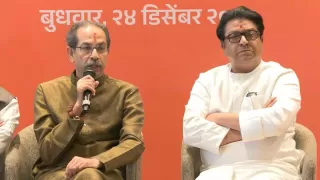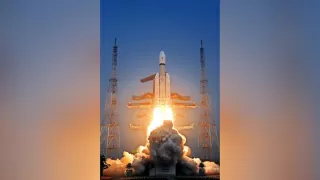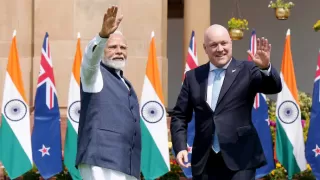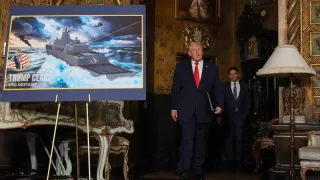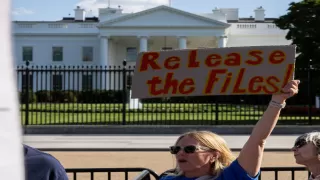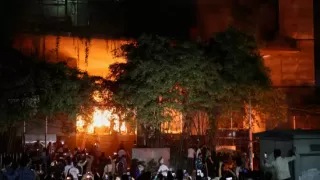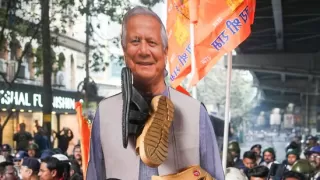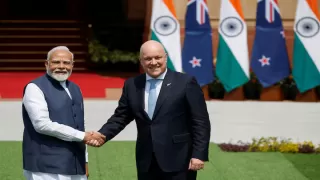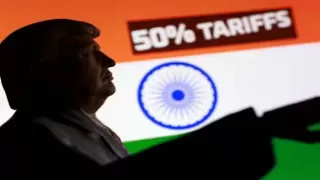In a tense display of brinkmanship on October 23–24, 2025, Russian President Vladimir Putin publicly downplayed fresh U.S. sanctions aimed at Russia’s oil sector while issuing a stark military warning. The measures — targeting two of Russia’s largest oil producers — were described by the Kremlin as “serious,” but Putin insisted they would not cripple the Russian economy. At the same time, he warned that delivery of long-range U.S. Tomahawk cruise missiles to Ukraine would cross a dangerous red line, promising a “very strong, if not overwhelming” response should Russian territory be struck.
The statements surfaced as Washington moved to cut off key energy earnings for Moscow and as Kyiv continued to press Western partners for the capability to strike deep into Russian-controlled areas. Putin’s mix of defiance and conditional openness to dialogue injected fresh volatility into an already fragile diplomatic landscape — with fuel markets, NATO capitals and governments around the world watching closely for signs of escalation or de-escalation.
Sanctions, targets and immediate fallout
The United States announced sanctions on two major Russian oil companies in a bid to weaken Moscow’s revenue streams tied to hydrocarbons. U.S. policymakers portrayed the measures as a calibrated effort to pressure Russia while avoiding a direct confrontation with its energy partners in Europe and Asia. Moscow, however, labelled the move an “unfriendly act” and vowed to adapt to the new constraints.
Analysts said the sanctions could complicate Russia’s access to international banking and shipping services that underpin global oil exports, but noted several mitigating factors: persistent demand from large buyers in Asia, existing stockpiles, and Moscow’s capacity to route commerce through alternate channels. Markets reacted nervously, with oil prices briefly jittery as traders weighed the potential for supply disruptions against the likelihood of workarounds.
Putin’s posture: defiance with a diplomatic window
In televised remarks and exchanges with reporters, Putin sought to adopt a posture of measured defiance. He characterised the sanctions as “serious” but insisted they would not fundamentally undermine Russian economic well-being in the near term. At the same time, he emphasised Russia’s continued interest in diplomacy, saying “dialogue is always better than confrontation — and especially better than war.”
This rhetorical duality — combining an openness to talks with pointed warnings — is a familiar playbook for the Kremlin. Observers noted that while the tough language rallies domestic audiences and signals resolve to international rivals, the reiteration of willingness to talk leaves space for back-channeling and negotiation if both sides choose to pursue it.
The Tomahawk warning and military risks
The most incendiary element of Putin’s remarks was his explicit red-line over the potential transfer of Tomahawk cruise missiles to Ukraine. He warned that if such long-range weapons were used to strike Russian territory, the Kremlin’s response would be “very strong, if not overwhelming.” That phrasing underlined Moscow’s intent to deter what it sees as a qualitative escalation in Kyiv’s strike capabilities.
For Washington and its allies, the Tomahawk question presents a complex calculus. Supplying such weapons could improve Kyiv’s ability to hit high-value military targets, but it also raises the risk of cross-border strikes that could draw Russia into more direct confrontation with Western forces or allied infrastructure. The warning therefore tightens the strategic constraints policymakers must weigh when deciding what to provide to Ukraine.
International reactions and alliance management
Allied capitals reacted with caution. Many NATO members signalled support for sanctions while urging restraint on weapon types that might provoke direct Russian retaliatory strikes. European governments — balancing energy vulnerabilities with geopolitical solidarity — expressed concern about long-term energy security and called for coordinated measures to limit Moscow’s ability to exploit loopholes.
At the same time, countries that import significant volumes of Russian oil faced acute policy choices: continue business as usual, seek exemptions, or pivot toward alternate suppliers. The sanctions’ design — and the degree to which secondary sanctions would be enforced — will largely determine how effective the measures prove in constraining Russia’s energy revenues.
Economic and market implications
Energy markets reacted to the uncertainty. Traders monitored shipment reports, insurance costs for tankers, and the possibility of bottlenecks for refined products. Should major purchasers reduce Russian imports quickly, supply tightness could drive prices upward, with downstream impacts on inflation, transport costs and political pressures in consumer nations.
Longer term, analysts warned of a creeping globalisation of energy security planning: countries might accelerate diversification strategies, stockpile building, and investment in renewables and alternative suppliers to blunt the geopolitical impact of energy coercion. For Russia, the sanctions increase the urgency of finding resilient revenue pathways and strengthening ties with non-Western buyers.
Diplomacy under strain — avenues for de-escalation
Despite the hard rhetoric, diplomatic channels remained active. Putin’s insistence on the value of dialogue suggested Moscow is not seeking an irrevocable break with the U.S., though the trajectory of events has narrowed room for easy rapprochement. Diplomatic actors indicated that carefully calibrated steps — such as phased measures, confidence-building signals, or multilateral talks — would be required to reduce the risk of further escalation.
Policy experts urged both sides to codify red lines and communication channels to prevent dangerous miscalculations. They recommended transparency around military aid packages, stepped engagement on humanitarian corridors, and coordinated sanctions enforcement that leaves space for negotiation if reciprocal de-escalatory actions are taken.
What comes next
The coming days and weeks will be telling. If the U.S. and its partners double down on sanctions and Ukraine receives long-range strike systems, Moscow could respond with military posturing, cyberoperations, or asymmetric measures — all of which would raise the stakes for global security. Conversely, carefully managed diplomacy — coupled with measured sanctions enforcement — could contain immediate fallout while preserving avenues for negotiation.
For now, Putin’s dual message — dismissive of the sanctions’ long-term economic effect but adamant about military red lines — has set the tone for a tense period in international relations. Governments, markets and populations will be watching closely to see whether deterrence holds, dialogue resumes, or the situation sharpens into a broader confrontation with unpredictable consequences.
Also Read: 21 Killed as Hyderabad-Bengaluru Bus Catches Fire in Andhra





